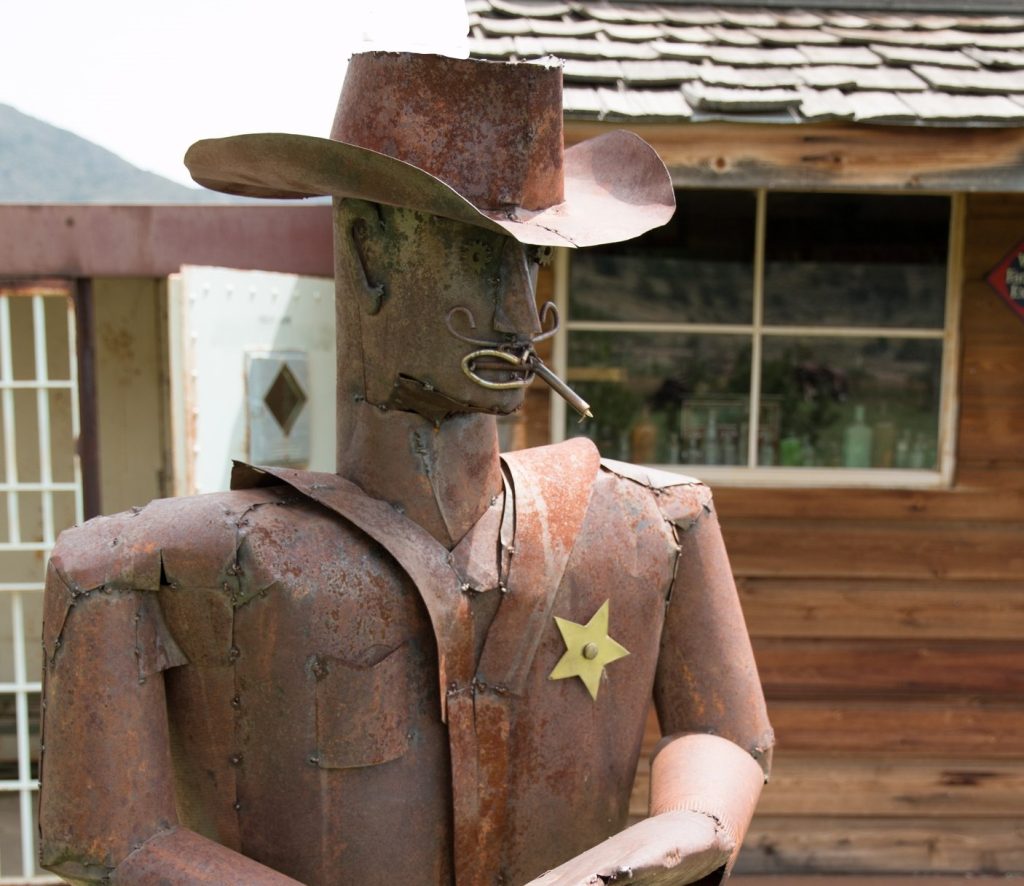
44169003 © Shea R Oliver | Dreamstime.com
Regulation can be an admission of failure – failure of a sector to do what it should do.
And the realisation that many organisations only take Asset Management seriously because some branch of government tells them they must can seem like our failure, failure to convince them AM is for their own benefit.
And some stop doing it when they are no longer pushed…
What incentivises someone in a position of some power in a public agency to do the right thing? More particularly, what encourages them to think longer term?
CEOs and other senior managers have several kinds of short-term incentives: personal annual targets and maybe bonuses. Local politicians with their own short-term ambitions for re-election. Immediate approval or disapproval from their communities.
Public-sector managers can pick up assumptions about their careers from the private sector. Moving onward and upward by moving organisations – or moving on before anything catches up with you.
On the other hand, whatever their views on their own careers, people in government regulations are normally set the objective of improving the efficiency and effectiveness of what they are regulating over time.
Of course there are poor regulations, and poor regulators. One urgent concern is governments depriving regulators of teeth and funding to enforce the regulations – the UK Environmental Agency’s ability to enforce the law on sewage releases into rivers, for example.
But overall, their incentives are far more aligned to longer-term Asset Management than the average manager. They realise they can’t change things overnight, that it’s about processes and competences and a longer-term perspective. The regulators I have known are generally firm, but patient. They know they have to be.
Infrastructure is too important to be left to ambitious executives alone.
Are we working closely enough with the regulators?
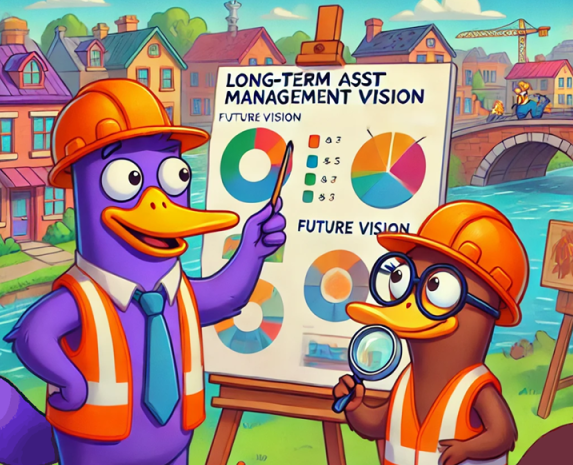
From script by Lou Cripps
Sometimes, it feels too much to do it all step by step.
Most organisations I work with don’t yet have any asset plans beyond five years. Some still only have annual budgets. How do you add in changing requirements for the longer term if you don’t even ask past five years?
And how many years ago did asset managers realise you can’t plan if you don’t think about where you want to get to? (At least 20, because strategy comes before planning in BSI PAS-55 published in in 2004.) But almost no-one has properly strategic ‘asset strategies’. They literally don’t know where they want to take their assets.
Bit by bit – and maybe getting nowhere fast.
But there is an alternative, maybe. Can we describe a compelling vision of where we want to be, first?
Can we even leapfrog some of the gradualist things we currently do?
Gradualism may be personal preference, or professional training. We haven’t always been bold about our mission. Some of us are detail people.
How would it be if we really believed we have a duty of care to make a big difference to the, frankly, fairly dumb way we’ve conventionally managed infrastructure?
Todd Shepherd and Julie DeYoung describe this as a system thing. What we have is a system, or paradigm, which resists change – so tinkering at the edges doesn’t work, because the old system will just bounce back as soon as you stop pushing.
This is, of course, quite a different concept of ‘system’ from the parts and pieces idea of a ‘quality management’ approach such as ISO 55000, which instead encourages a bit by bit, start with AM policy or SAMP. Better than thinking the first step has to be IT – but possibly no more ‘sticky’.
Quicker, and less heartache, to go for undermining the whole thing with strategy and long-term planning from the start?

from script by Lou Cripps
Just a thought about current Asset Management practice.
One core tool used by many is the maturity assessment or gap analysis. See, for example, the Institute of Asset Management’s SAM+ tool.
The concept here is to audit an organisation against a standard, recognise its shortfalls against that standard, and recommend actions to close the gaps – in an implementation plan often referred to as the Asset Management roadmap. The standard could be ISO 55000 series, or perhaps more usefully the 39/now 40 subjects in the GFMAM Asset Management Landscape.
ISO 55000 has some oddities (don’t get me started here on the terms ‘SAMP’ and ‘asset management plans’), but the involvement of far more people in the revision in 2024 probably makes its coverage more realistic.
The problem with the world of AM assessments and roadmaps isn’t fundamentally which topics we assess.
It’s that we simply don’t take our own principles seriously.
Alignment with organisational objectives is surely the key organising concept in ISO 55000. And yet we still propose AM implementation against standards – rather than our corporate priorities.
We also have a history collectively of ridiculous outputs, roadmaps that detail 70 or 130 different actions, for AM teams of perhaps 2 or 3 people to implement in the next 2 years – as though we had no experience, no common sense of what it’s like to implement major change. Almost as though we aren’t taking the AM Landscape ‘red box’ Organisation & People into account at all.
In Asset Management, there isn’t a ‘right’ way to do everything. That’s engineer talk. The optimal way forward is the best realistic option for us, for where we are now, for what our organisations are trying to achieve.
Sure, there are some things which are probably always a bad idea to do, and some that are usually good. But it’s not about a set of rules. Not a template we can fill in, leaving our brains in a jar somewhere.
Whatever we call it, a top-level strategy for Asset Management is essential. But it only makes any sense as a case for how AM will contribute to our organisational targets and challenges. And the practical actions that will do most to support the overall business strategy.
Yeah, the answer is almost always going to be a better planning process for our assets.
But if we start by taking something from inside AM, like ISO 55000 or GFMAM 40 Subjects, and use that as a basis to propose priorities for implementation, we are doing what asset people have too often done before.
Ignoring the business priorities. Not being aligned, right from the start.
Instead, the first thing is to make sure we really understand the organisational challenges, by talking with the people at the top. They won’t always be crystal clear, but that’s the right terrain to start with. Perhaps we’ll even be able to assist in articulating the challenges.
Then talk about what we can realistically do with AM to meet them.*

The gap assessment we require is the gap between what AM could usefully do for our organisation and what we are actually achieving at the moment.
*In my mind, there is very little chance that the corporate priorities for infrastructure won’t require good Asset Management, urgently. We are definitely not at risk of talking ourselves out of a job.
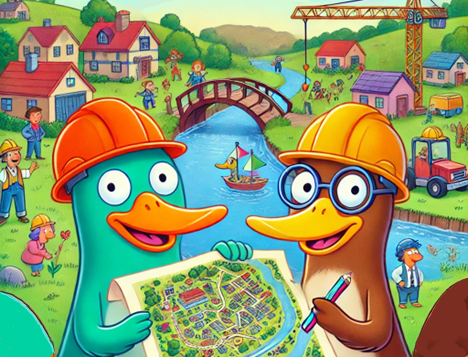
From script by Lou Cripps
Bad news for techies, but infrastructure is mostly money, business and politics.
Yes, Asset Management is about making better decisions on our physical assets. But not just any decisions: the wider, longer-term, strategy and co-ordination that organisations struggle with.
Operations already take care of immediate responses. Engineers are more than happy to focus on the technical details. Finance counts the money – but struggles to do more because it doesn’t get the honest information about the assets that it needs.
The gap that Penny Burns identified in 1984 was, first of all, planning for capital renewals to maintain the infrastructure base we already have, beyond the next year. A need most people didn’t even notice, let alone take on to fill.
In the forty years since, Penny has talked extensively about decisions for new infrastructure as well. About how the overall system needs to change to meet changing demands for service. And the impact of physical assets on the economy, the environment, our communities.
In other words, Strategic Asset Management.
In the past few years I have been asked to develop webinars and other support for better asset strategy and planning. My fundamental message is A. Strategy and planning are not the same, and B. they are complementary, and we need them both.
Over the next few weeks, we’d like to explore them both further. Starting with understanding why organisations are so bad at them.
- Asset Management planning is about the allocation of budget and resources. It therefore has plenty of opponents who only care that their own projects and assets get the money.
- Asset Management strategy requires standing back to think strategically, which many people (including CEOs) are not good at doing.
- There isn’t a formula, or a template. There are good questions, but some of them are hard, and many of them require saying no to some things, and some people. Not going along with the political clamour for simplistic solutions.
- There are vested interests – some of it bordering on corruption (who will make money from this decision?) And more who feel challenged on how they have done things in the past. Even on what they were trained to do.
What are your experiences of asset planning? What works – and what gets in the way?
Is any of it really a technical problem we can solve at our desks?
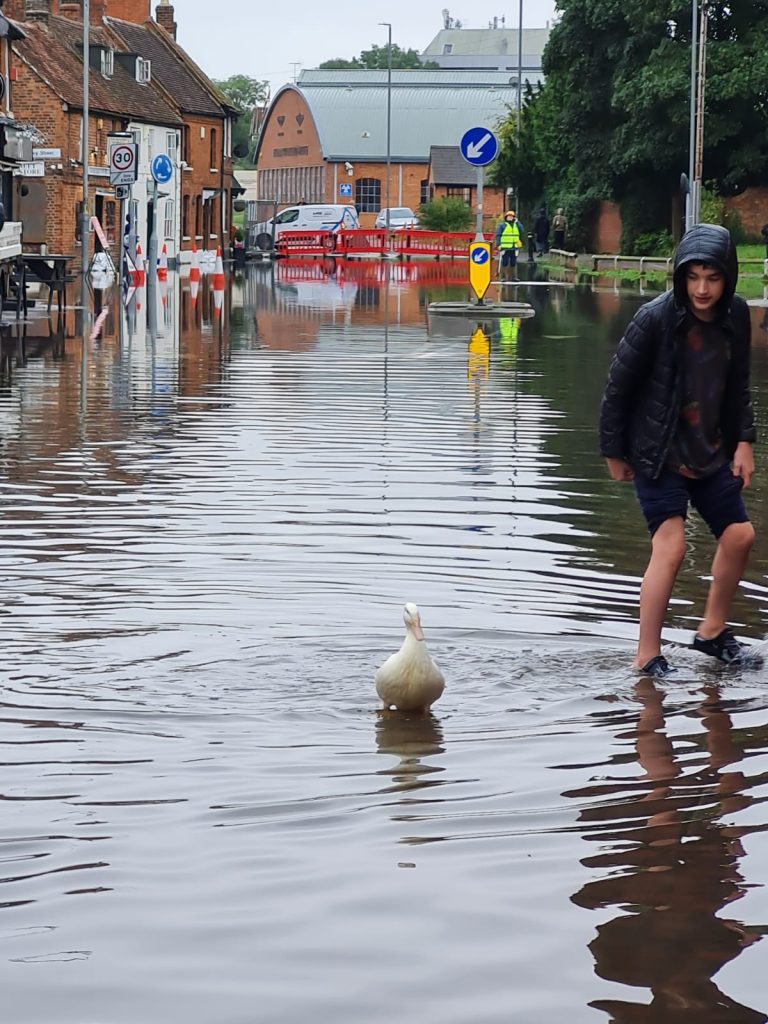
At least the pet duck enjoyed it
When we moved into our house, we first realised the problem when the mortgage company said we needed flood insurance, and discovered that would cost ten times the normal building and contents policy.
Until a smarter insurance company here sold us a cheaper policy based on postcode (in other words, by group of two or three houses), not Environment Agency flood areas: they spotted a market opportunity for a more precise risk assessment. Smug us!
Until six years later, and the house actually did flood.
And four years on, in late 2024, the water came to our front door twice, and overtopped the sand bags the second time.
And the risk of flooding in England is predicted to increase five-fold in the next decades under current projections for global warming.
However, Newport Pagnell is not Miami.
To be clear, our flooding is due to rain, and living next to where two rivers meet. Unfortunate timing of river surges – or someone getting the timing off on floodgates. We are nowhere near the sea and don’t get hurricanes, and so far the extent of our flooding is a few inches of water at the front of the house.
A few houses flooding a bit: you start thinking about resale values, and whether getting wet every year or so will do the brick walls and wood floorboards any good.
In South Florida, they face losing whole towns to the sea and the swamps. Many people live only a few feet above current sea levels, and the infrastructure is similarly low and at risk. They have to worry about overwhelmed sewerage systems and nuclear power plants.
Florida has such a tax-averse politics that it will come down to money for school education versus money for flood action soon for some towns. They continue to build right up to the sea and in areas only just above sea level, even as they watch the hurricanes track towards them. And of course the ruling Republicans also mostly deny climate change.
It would seem a perfect storm of human inability to face the facts.
But it is striking just how much of an issue it is for infrastructure. And that involves use of tax dollars, national insurance schemes, building codes, politics and Politics: so much more than simply technical questions.
Do we speak the right language/s to manage this?

Just a reflection on our own institutions.
I have been involved with the IAM on and off for almost 25 years. I attended Asset Management Council meetings and conferences (under different names) when I lived and worked in Australia in the 2000s. I have been impressed by the IPWEA since someone brought back a copy of the IIMM to the UK around 2001. My boss was instrumental in setting up the GFMAM.
These are just the most obvious AM institutions. (But shout out to Canadian AM networking here, too.)
They have not always been particularly friendly to each other, but at roughly 30 years old at their oldest, we seem to have developed some institutional maturity.
I was heartened to realise that, for all its limits – well delineated by Richard Edwards and others at the recent IAM UK conference – the revisions and new ISO 55000 documents involved hugely more people this time around.
The IAM itself has grown and now functions in more European and Asian countries, as well as succeeding in the USA; it has a truly excellent CEO in Ursula Bryan. I love the IPWEA ‘Ask Your Mates’, the kind of practical support we need from out networking.
But perhaps the best sign of all was a workshop last month on ‘Peak Infrastructure?’. A room full of Asset Managers asking what infrastructure we really need. And how there is work still to be done to make a lasting difference. Changing national government policies not to incentivise (or give in to developers and construction companies) building new when we can maintain what we have.
All physical assets come at a cost, often a very steep one in impact on the environment and communities. We have to take the lead to make sure we understand costs versus benefits.
That’s the real question when we get together as Asset Managers.
*IAM: Institute of Asset Management, HQ in UK. IPWEA: Institute of Public Works Engineering Australasia. GFMAM: Global Forum on Maintenance and Asset Management, established by the IAM, Asset Management Council and others. Asset Management Council in Australia. Canadian Network of Asset Managers, plus Provincial AM networks such as AMBC and AMOntario.
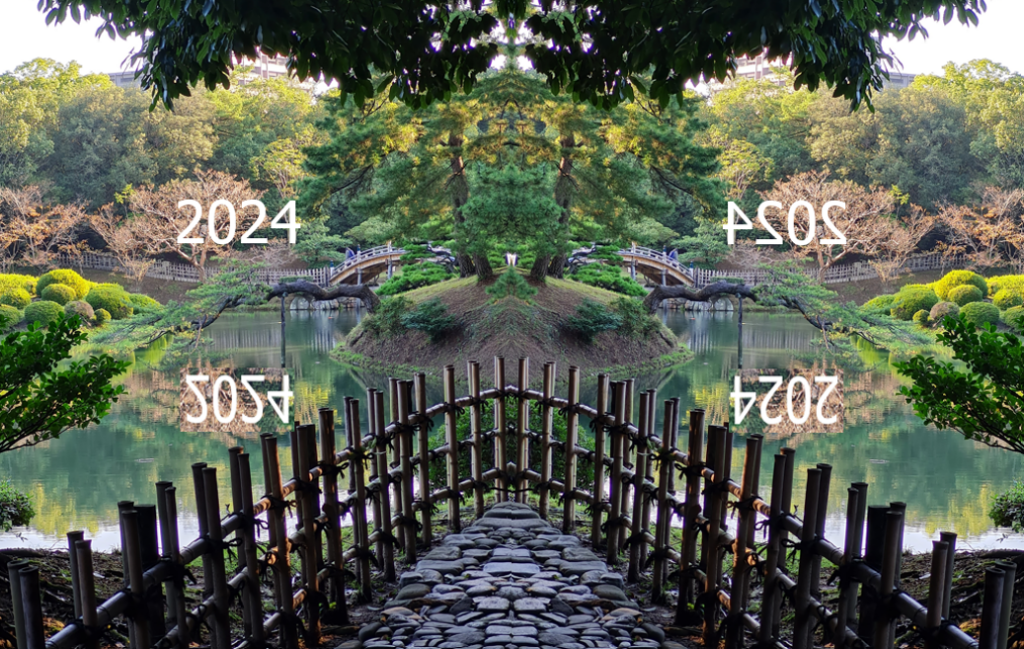
At this end of 2024, I am more convinced than ever that the whole point of Asset Management is Planning.
Planning, as opposed to delivery – which we have been doing for decades, if not centuries. Asset Management is about thinking through what we need to deliver across our asset base, Plan before Do. (Don’t just do something, sit there.)
That is what Penny created Asset Management for.
And the central concept was lifecycle modelling, supported by cost-risk-optimisation, matched to understanding demand. When is the right time to replace, renew, maintain? What don’t we need to do?
The AMP has been the centre of Asset Management since the very beginning. As captured in state and federal requirements, as documented in the International Infrastructure Management Manual from the IPWEA.
We need Planning – and it is not going to happen without us.
But it is too often still – after 40 years! – fragmentary, driven by vested interests (even the understandable wish by people on the ground to get money for their own assets).
It doesn’t look at what happens next: ‘And then what?’
And I can count the organisations I work with that actually do lifecycle cost modelling or cost-risk optimisation on the fingers of two hands.
To do the maths on all the major costs, risks and benefits of different options across the lifecycle, and demonstrate that (for example) building back rural roads like for like after they have been washed away for the fourth time in five years simply doesn’t add up.
Time for a Campaign for Honest Asset Management Planning?

Among my personal highs and lows of 2024, the standout experience was going to Japan.
I am sorry to say I have never encountered a Japanese Asset Manager, but thanks to GFMAM I got to hear a rep from the Japanese maintenance societies at the IAM UK conference in London last month.
Despite what we hear about its economy, the country is still doing very well on total maintenance and quality in manufacturing. Some days it seems every other car on our roads is a Toyota.
And my overriding sense of Japan? That along with the incredible food and gardens and manufacturing, it’s simply the most sensible society I have ever seen.
Starting with the toilets at Tokyo airport when we arrived.
I have long suspected the most important thing about Asset Management is that it is sensible. Don’t spend where you don’t need to, but do what you must to sustain what we need to thrive. Don’t preach growth for its own sake, and be wary of ‘innovation’ (think of ‘the Maintainers’ and their 2020 book The Innovation Delusion*). What does the evidence tell us? What risks are we really running with our assets? Cut through the lobbying and classical economics – and make sensible decisions.
Sensible is not necessarily glamorous; AM is not glamorous. It doesn’t pander to fantasies, of engineering or entrepreneurs.
As several Western countries seem to lose the plot, even caught up in what can only be described as fascist dreams, it was wonderful to experience somewhere that has a much stronger sense of its limits. A lot of people in a limited space, and some of that physical space quite dodgy: how can we organise food, rub along with millions of strangers without pulling guns on each other, love nature (trees!), create beautiful things? Value education, and don’t take our gods too seriously.
Take what we need, and reject what we don’t.
Yes, I am hopelessly romantic about Japan, ever since my father worked there when I was a child. But I didn’t expect to come away with sensible.
PS not sure I will ever be happy with cold toilet seats again.
* The Innovation Delusion: How Our Obsession with the New Has Disrupted the Work That Matters Most
Note: Japan, like many countries including the UK, USA, China and France, not to mention Germany and Russia, has some dismal history. Unlike some of those countries, it appears to be able to learn from its past, but this is not to excuse its treatment of Korea and China and prisoners of war in the past.

In the perennial tussle between the thinkers and the doers, I must confess that I have always been impatient with those who want to ‘get out and do’ before they have ‘sat back and thought’. They have been just as impatient with me!
I now realise that we are both motivated by the same goal – we want to avoid wasting our time.
Since I have confidence in my ability to design a suitable operational system to meet any objective, once I clearly know what that objective is, I avoid wasting time tackling the wrong objectives by sitting back and thinking about it.
The practical doers of this world do not want to waste their time thinking about objectives that may be “all very fine but not operational”. So they first insist that I show them that it can be done; then, and only then, will they be prepared to consider whether it should be done.
Recognising our common pressures, I will try to get less frustrated next time I encounter this reaction – and patiently explain ‘how’, even though I really want to get straight onto the ‘why’.
Today we seemingly all accept that we are short of time and thus feel constrained to give short shift to thought and planning. But how much of this lack of time is self-induced? How often do we need to re-do what we did in haste? Or spend time working around the problems that the haste engendered?.
Whichever camp you fall into – the thinkers or the do-ers – how do you cope with the frustration of dealing with ‘the other’ ?

I have just been to the 30 year celebration of the Institute of Asset Management (IAM) in London, where we also marked ten years of ISO 55000. This was held jointly with the Global Forum on Maintenance and Asset Management (GFMAM) – representing AM and AM-minded maintenance societies worldwide – with representatives from IPWEA and the Asset Management Council. A time to reflect as well as celebrate!
Russ Seiler of Grant Public Utility District (one of the Columbia River hydro utilities in the Pacific North West) reflected on his journey since 2016. Starting from scratch as an Asset Management lead, under Russ the team at Grant has looked at asset inventory, Wave 1, and the absence of basic asset data. It then focused on the AM ‘system’, as in ISO 55000, and the idea of building AM artefacts. (Wave one-and-a-half?) But, encouraged by Penny’s 2023 book on the beginnings of AM, he realised that neither were really the point.
His conclusion after seven years? “If your asset management program never affects the money being spent on assets, your program should and will be terminated.” AM creates the machine that produces the plan, a better plan for the assets. Everything else is just a means to that end.
It’s the AMP process, ok.
I have trained many 1000s in the last 14 years, in the USA and elsewhere. And that’s what I have found, too. Too many get caught up in asset data – which is important, sure – and documents such as the AM Policy and SAMP, which are also important. But that is never what Penny meant by Asset Management.
And ‘plan’ doesn’t just mean what proactive maintenance you should do, or what you need to spend capital on to sustain your existing asset base. It’s also what if any new infrastructure we require. It’s whole of life and system-wide. It’s big.
Have we been tinkering at the edges while the world changes around us?

Recent Comments